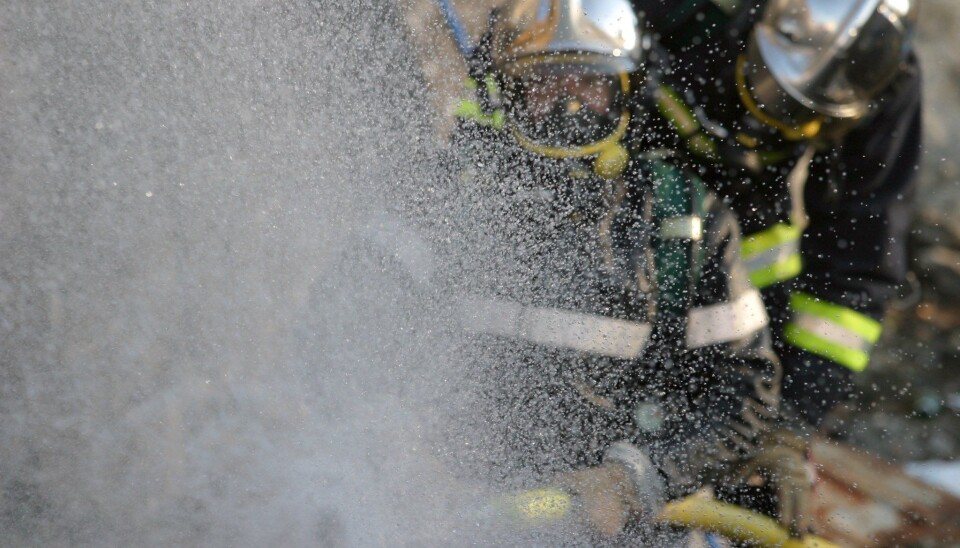This article was produced and financed by The Research Council of Norway

Streaming video from accident sites
Self-configuring data networks may provide crucial help to emergency and rescue operations in hard-to-access areas.
Denne artikkelen er over ti år gammel og kan inneholde utdatert informasjon.
There are extra challenges when accidents occur in hard-to-reach locations such as in a tunnel or impassable mountain terrain where no stable computer networks are found.
For the past ten years, however, technology for mobile ad hoc networks that enable rescue workers to communicate with one another or with a command control centre has been available.
These networks configure themselves automatically among mobile devices located within a given geographic area.
Video streaming crucial
The ability to stream video from the site of an emergency to the command centre will in many cases be essential.

Today, there are a number of quality solutions for mounting cameras to helmets or integrating them into eyewear. While there are thus no longer the same obstacles to recording video, streaming it is another story. Existing mobile ad hoc networks lack the stability and the bandwidth to be reliable for transmitting video.
However, smart phones of today are ubiquitous and have become so powerful that they can be integrated in temporary emergency networks, providing a platform for efficient video transmission.
Developing software for multimedia data
Professor Thomas Plagemann of the Department of Informatics at the University of Oslo is heading a research group working with what are known as Delay Tolerant Streaming Services (DT-Stream) systems. This is a type of network that tolerates disruptions and delays, in contrast to the Internet, for example.
Dr Plagemann and the rest of his team have studied what it will take to enable a mobile ad hoc network to manage relatively large amounts of multimedia data, such as video, adequately in emergency and rescue operations.
Can connect to permanent emergency network
Some of the criticism being levied against the new Norwegian emergency network currently under development is that during its initial phase it can not handle either photo files or video. Connecting via a mobile ad hoc network is one possible approach to solving this.
“First and foremost, we are concentrating on transmitting multimedia data over mobile ad hoc networks with an eye to use in emergency and rescue operations in areas with no permanent data infrastructure. Of course, it will also be possible to connect to the Internet or the Norwegian digital communication network for emergency and public safety (Nødnett),” says Dr Plagemann.
With funding from the large-scale programme “Core Competence and Value Creation in ICT” (VERDIKT) at the Research Council of Norway, Dr Plagemann’s research group has reached the point where they have partial solutions ready for use. The next step is to put these pieces of the puzzle together into a complete application.
Breaking programming rules – more efficient
One of the solutions developed came into being as a result of violating some of the classical engineering principles of network programming. Instead, the researchers have utilised a process called cross-layer optimisation.
Network systems today are highly complex. In connection with testing and development, programmers divide them up into separate layers in order to simplify the work. The result is a stack composed of several layers.
The bottom layer is the physical layer, i.e. whether it is a wireless, cable or fibre-optic network. Above this is a data linking layer that transmits bits from one computer to another. On the top is the network layer where operations such as running Internet protocols are carried out.
The rule in network programming is to address only the layer directly beneath the layer being worked on. Dr Plagemann’s group has developed middleware that processes all the various layers simultaneously.
“We don’t want the applications programmer to have to worry about where the data are being sent or what type of device or operating system is in use. This is all hidden away in our middleware,” explains Thomas Plagemann.
The middleware reduces data loss in the network, saves energy and improves data-transmission speeds.
Translated by: Glenn Wells/Carol B. Eckman
































